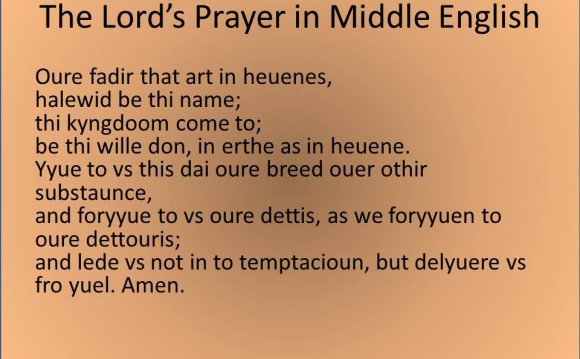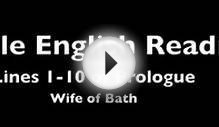
Historical period
The chronological boundaries of the Middle English period are not easy to define, and scholarly opinions vary. The dates that OED3 has settled on are 1150-1500. (Before 1150 being the Old English period, and after 1500 being the early modern English period.) In terms of ‘external’ history, Middle English is framed at its beginning by the after-effects of the Norman Conquest of 1066, and at its end by the arrival in Britain of printing (in 1476) and by the important social and cultural impacts of the English Reformation (from the 1530s onwards) and of the ideas of the continental Renaissance.
The most important linguistic developments
Two very important linguistic developments characterize Middle English:
- in grammar, English came to rely less on inflectional endings and more on word order to convey grammatical information. (If we put this in more technical terms, it became less ‘synthetic’ and more ‘analytic’.)Change was gradual, and has different outcomes in different regional varieties of Middle English, but the ultimate effects were huge: the grammar of English c.1500 was radically different from that of Old English.Grammatical gender was lost early in Middle English. The range of inflections, particularly in the noun, was reduced drastically (partly as a result of reduction of vowels in unstressed final syllables), as was the number of distinct paradigms: in most early Middle English texts most nouns have distinctive forms only for singular vs. plural, genitive, and occasional traces of the old dative in forms with final -eoccurring after a preposition.In some other parts of the system some distinctions were more persistent, but by late Middle English the range of endings and their use among London writers shows relatively few differences from the sixteenth-century language of, for example, Shakespeare: probably the most prominent morphological difference from Shakespeare’s language is that verb plurals and infinitives still generally ended in –en (at least in writing).
- in vocabulary, English became much more heterogeneous, showing many borrowings from French, Latin, and Scandinavian. Large-scale borrowing of new words often had serious consequences for the meanings and the stylistic register of those words which survived from Old English. Eventually, various new stylistic layers emerged in the lexicon, which could be employed for a variety of different purposes.
One other factor marks out the bulk of our Middle English evidence from the bulk of our Old English or early modern English evidence, although it is less directly a matter of change in the language than in how it is represented in writing:
- the surviving Middle English material is dominated by regional variation, and by (sometimes extreme) variation in how the same underlying linguistic units are represented in writing. This is not because people suddenly started using language in different ways in different places in the Middle English period, but because the fairly standardized late Old English literary variety broke down completely, and writing in English became fragmented, localized, and to a large extent improvised.
A multilingual context
Medieval Britain had many languages. English continued to be in contact with Celtic languages on many of the internal frontiers within the British Isles. Until the use of Scandinavian languages in mainland Britain died out (the precise date of which is a matter of uncertainty), it continued to be in contact with these also. And, crucially, it was in contact with Latin and with French.
MORE TRANSLATION VIDEO











